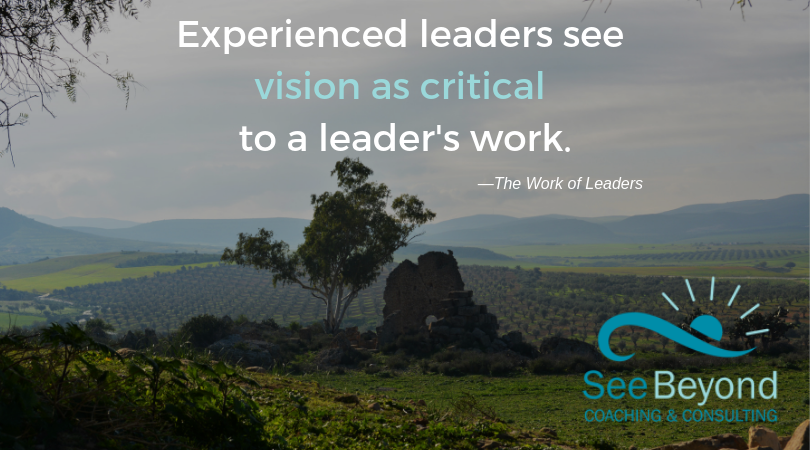A Strong Vision Points to Success. Why?
Where are you headed? What helps you get up in the morning?
On a practical level, our eyes predict our movement and direction. We envision a whole scene and conclude where we want to go.
If it's a race, our eyes are fixed toward the finish line.
If it's Marjane or another supermarket, our eyes know where the checkout is.
If we're steaming couscous, our mind's eye envisions the aromatic, heaped finished delight we'll soon enjoy.
Our vision leads us to the destination.
Likewise, a written vision helps shape the direction of our team or company so we can also move forward with purpose.
Here are some written vision statements that inspire:
To provide access to the world’s information in one click. (Google)
We will lead the fight against extinction. (San Diego Zoo)
A world without Alzheimer's disease. (Alzheimer's Association)
To create a better everyday life for many people. (IKEA)
The big picture spurs on employees, the team, and participants or customers. A vision is easy to remember and encourages others. A vision keeps the motivation high.
“Good business leaders create a vision, articulate the vision, passionately own the vision, and relentlessly drive it to completion.”
— Jack Welch, chairman of General Electric
Though visions make sense, some leaders choose not to have them.
In a study where 3,574 people were asked to rate a specific leader, 87% of leaders who were identified as best leaders had a crafted vision. The worst-rated leaders rarely created a compelling vision for their group. Only 10% of them had visions. Crafting a vision goes along with strong leadership. If you are an effective leader, you'll have a vision.
Why do some leaders not have a vision?
It takes valuable time to create.There are other urgent items vying for attention, especially living abroad. Sickness, car repairs, paperwork for residency, and translation confusion put leaders into survival mode. Isn't it enough that everyone is clothed, fed, and somewhat happy?
Once created, it calls for alignment. Your vision might be clear, but is the rest of the team on the same page? If you came to North Africa intending to create a small business or NGO, you probably developed a vision before you arrived. Now you might realize the vision doesn't fit with the culture and the team of people you recruited to help. It will take a lot of time and energy to make sure everyone's on board. Is it worth it?
Once aligned, it resists changes. Even if everyone agrees with the vision, will it affect anything in everyday life? People like their ways of doing things and often aren't motivated to change. Is it worthwhile to create a vision and then have no one think about it? Why bother?
Why create a vision?
1. Vision motivates.
A vision statement is a picture of a desired future (Watkins & Mohr, 2001). More than anything else, it motivates. Founders tend to have a clear vision, but vision also draws others to join in—not on a mechanical level, but with their hearts and energy.
A vision must answer the "why" question—"Why do you do what you do?" What you do and how you do it flows from that vital “why” question.
Because motivation can tend to wain, vision needs to be refreshed regularly. Vision isn't just one person's dreams, but it involves input from the team and others. Actively listening to team members to glean dreams, desires, and purpose will lead to creating or renewing a vision statement that reflects your team and energizes everyone to keep moving forward.
2. Vision directs.
Some visions come from seeing an opportunity to do something new. Others come from a desire to see a change in something that’s not working well.
Vision helped direct our story. Years ago, we at See Beyond observed that some foreigners who came to live in North Africa were leaving before accomplishing what they came to do—often for preventable reasons. Few local resources were available to help people work through issues like stress, struggles, depression, interpersonal problems, and team and leadership issues. The issues worsened, and people left.
A vision for expatriates to “do better and stay longer” began to develop. We wanted to see these gifted people fulfill their passion, work, and calling. The vision motivated our further training and education, our hiring, and our creating of programs. We became poised to help expats deal with inter- and intra-personal struggles and "see beyond" their current horizon. Vision directs.
3. Vision shapes goals.
A strong vision statement makes goal setting and decision-making more cohesive. This enables smoother planning on your team or in your company. Everyone has an idea where they are headed and can prioritize goals accordingly. It helps focus meetings, keeping the "why" of what you're doing in sight.
Your values lay the foundation. The vision sets the future aim. Created goals (often part of a mission statement) are the blueprints which show the broad stroke path to the end goal. A vision is essential—the target for which you are aiming in all your planning.
“You have to decide what your highest priorities are and have the courage—pleasantly, smilingly, unapologetically—to say ‘no’ to other things. And the way you do that is by having a bigger ‘yes’ burning inside.”
— Stephen R. Covey, businessman
What's that "yes" for you?
Pause and consider if your vision answers the “why” question.
What could you do today to clarify your vision?
Visioning is one of the top nine areas a leader needs to pay attention to. Curious how effective your leadership is? Are you aware of your strengths? Take the leadership checkup to find out.




